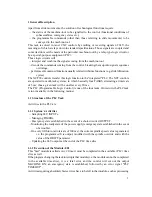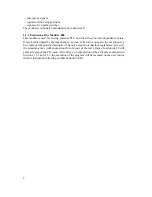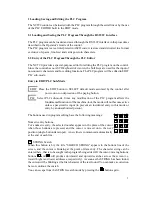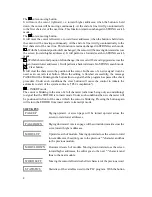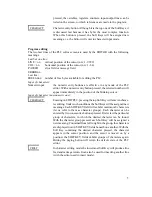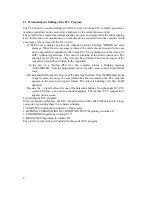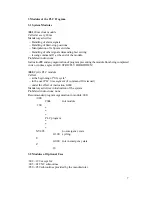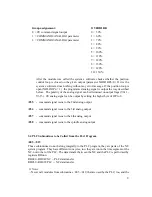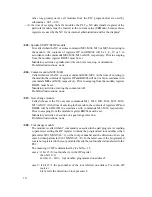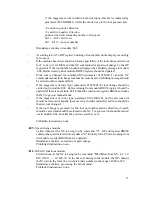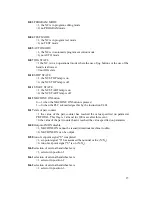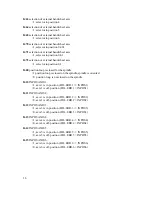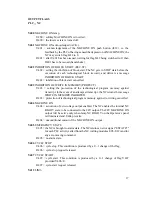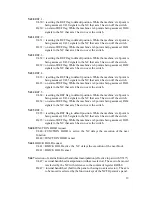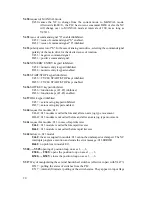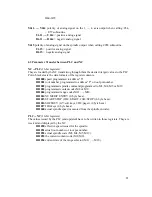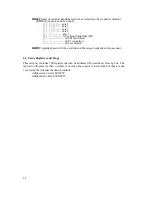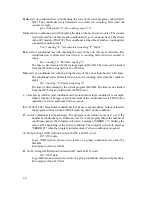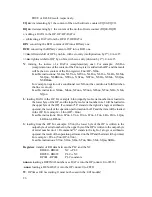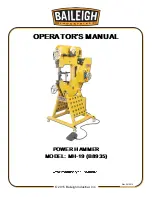
14
4 Variables of the PLC Program
4.1 PLC
%$
%$
%$
%$
Machine Interface Input, Output Lines
The basic configuration of the NCT90 control has 48 INPUT and 32 OUTPUT lines on the
INT board (1 pcs). That number can, of course, be expanded through the use of max. 4 INT
boards. Since each INT board carries 48 INPUT and 32 OUTPUT lines, the maximum
number of interface lines is 192 INPUT and 128 OUTPUT. The allocation of sockets on the
INT0 interface board is shown in the Appendix.
Boards INT1-INT3 have, of course, the same socket allocations as the INT0 board. eference
can be made to the lines of the extension boards as follows:
INT0
1000 - I057
O000 - O037
INT1
I100 - I157
O100 - O137
INT2
I200 - I257
O200 - O237
INT3
I300 - I357
O300 - O337
4.2 PLC
%$
%$
%$
%$
NC Input, Output Flags
The input flags will inform the PLC about the states and modes of the NC. The input flags
are managed in the same manner as the 24V input lines. The state of the line (which may be
1 or 0) can be polled through opening conditional checks Innn, NInnn or Vnnn.
The PLC communicates with the NC about its own states, the executed or requested modes,
through output flags. The output flags can be turned on or off in the same manner as the 24V
output lines are managed (Dnnn, Unnn or SYnn). The states of the output flags (which may
be 1 or 0) can be polled through opening conditional checks (NYnnn).
INPUT FLAGS
NC
$$$$
PLC
I400
MANUAL MODE
=1, the NC is in manual mode
=0, the NC is not in manual mode
I401
SETTING MODE
=1, the NC is in setting mode
=0, the NC is not in setting mode
I402
REFERENCE POINT RETURN MODE
=1, the NC is in reference point return mode
=0, the NC is not in reference point return mode


